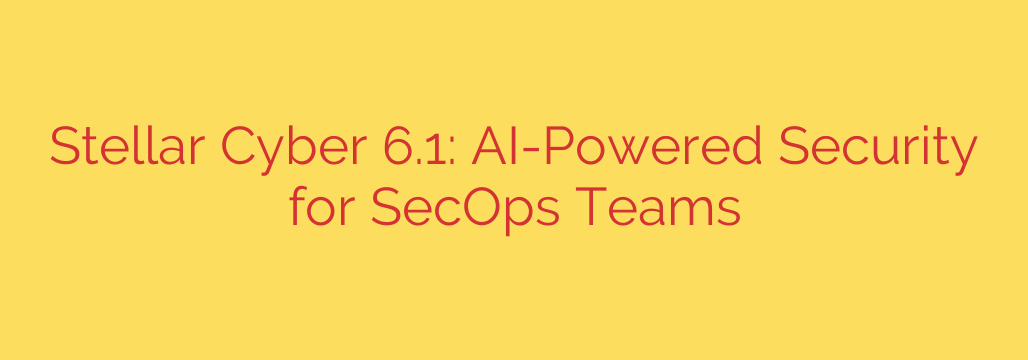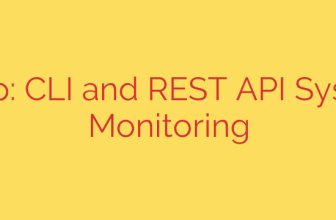
Revolutionize Your SecOps: How AI-Powered Platforms are Redefining Threat Detection
In today’s complex digital landscape, security teams are drowning in a sea of alerts from dozens of disconnected tools. The constant noise makes it nearly impossible to distinguish genuine threats from false positives, leading to analyst burnout and missed attacks. A new generation of AI-driven security platforms is emerging to solve this fundamental challenge, transforming security operations from a reactive, high-stress function into a proactive, intelligent defense.
These advanced systems move beyond traditional security information and event management (SIEM) tools by leveraging artificial intelligence to unify security data and deliver context-rich, high-priority incident reports. For over-stretched SecOps teams, this marks a critical evolution in the fight against sophisticated cyber threats.
The Core Challenge: Alert Fatigue and Siloed Tools
Modern security operations centers (SOCs) face a perfect storm of challenges. The attack surface has exploded with the adoption of cloud infrastructure, remote work, and countless SaaS applications. To monitor this environment, organizations have deployed a wide array of specialized tools for endpoint detection (EDR), network analysis (NDR), cloud security, and more.
While each tool is valuable, they operate in silos, generating thousands of individual alerts without context. Security analysts are left with the manual, time-consuming task of piecing together clues from different systems to understand if a real attack is underway. This environment creates significant risks:
- Massive Alert Volume: The sheer number of daily alerts is overwhelming, making it easy for critical threats to get lost in the noise.
- Lack of Context: An alert from an EDR solution is just one piece of the puzzle. Without seeing related network activity or cloud login events, its true significance is unknown.
- Slow Response Times: Manually correlating data across multiple dashboards is incredibly inefficient, dramatically increasing the Mean Time to Detect (MTTD) and Mean Time to Respond (MTTR) to an incident.
The Solution: An AI-Driven, Unified Security Platform
AI-powered security operations platforms tackle these problems head-on by creating a single, cohesive view of your entire technology environment. By ingesting and normalizing data from all your existing security sources—including endpoints, cloud services, identity management systems, and network traffic—these platforms use machine learning to connect the dots automatically.
The core principle is to shift focus from individual alerts to comprehensive incidents. Instead of forwarding thousands of low-level logs, the AI engine analyzes relationships and behaviors over time, grouping related events into a single, high-fidelity incident report that tells the complete story of an attack.
Here are the key benefits of this modern approach:
- Drastically Reduce Alert Fatigue: By correlating and contextualizing data, these platforms can reduce thousands of raw alerts into just a handful of actionable incidents. This allows security analysts to focus their time and expertise on investigating real threats, not chasing false alarms.
- Gain 360-Degree Visibility: Integrating data from across the hybrid environment breaks down security silos. Analysts get a single pane of glass to view an attack as it moves from an endpoint to the network and into the cloud, providing a complete and unified picture of the threat.
- Accelerate Threat Detection and Response: With AI handling the heavy lifting of data correlation, analysts are presented with a pre-built attack timeline. Instead of spending hours manually piecing together an attack, they can immediately understand the scope, impact, and root cause, enabling them to respond in minutes, not days.
- Enhanced Security for Cloud and SaaS Applications: As businesses rely more on services like Microsoft 365, Salesforce, and AWS, securing them becomes paramount. Advanced AI platforms are now extending their capabilities to monitor these environments, detecting suspicious user behavior, misconfigurations, and threats specific to SaaS applications.
Actionable Tips for Modernizing Your Security Operations
Adopting an AI-driven approach is a strategic shift that empowers your security team to work more effectively. Here are a few practical steps to consider:
- Prioritize Integration: Look for security platforms with an “open” architecture. A solution that integrates seamlessly with your existing security tools (EDR, firewalls, identity providers) will provide the most comprehensive visibility and maximize your return on investment.
- Automate Tier-1 Triage: Leverage the platform’s AI to handle the initial analysis and triage of alerts. This frees up your human analysts to focus on more complex threat hunting, investigation, and strategic defense planning.
- Focus on Incident-Based Workflows: Train your team to shift from an “alert-chasing” mindset to an “incident investigation” workflow. This improves efficiency and ensures that the most critical threats receive immediate attention.
The future of cybersecurity isn’t about adding more disconnected tools; it’s about making smarter use of the data you already have. By harnessing the power of AI to unify visibility and provide deep context, organizations can finally empower their SecOps teams to stay ahead of attackers and build a more resilient defense.
Source: https://www.helpnetsecurity.com/2025/09/22/stellar-cyber-6-1/








